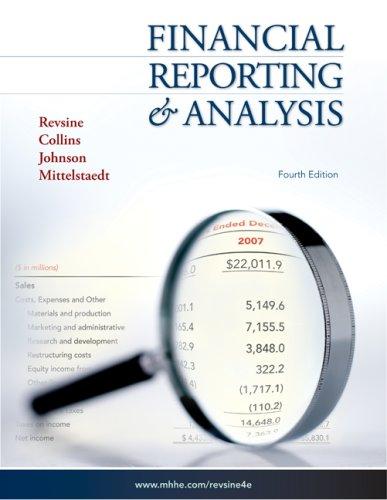Appearing next is information pertaining to Garrels Companys Allowance for doubtful ac- eee counts. Examine this information
Question:
Appearing next is information pertaining to Garrels Company’s Allowance for doubtful ac- eee counts. Examine this information and answer the following questions.

Required:
1. Solve for the unknowns in the preceding schedule. (Hint: Use T-accounts.)
2. Make all entries related to the Allowance for doubtful accounts account for 2004-2006.
3. Make all entries for bad debts for 2004-2006 assuming that Garrels did not accrue for estimated bad debt losses but instead recorded bad debt expense once receivables were determined to be uncollectible. (This is called the direct write-off method.)
4. Why does GAAP require the allowance method over the direct write-off method?
5. Calculate the cumulative difference in reported pre-tax income under the allowance and direct write-off methods over the 2004-2006 period.
6. Assume that it is the end of 2007 and Garrels management is trying to decide on the amount of the bad debt expense for 2007. Based on an aging of accounts receivable, the accounting department feels that a \($400,000\) provision is appropriate. However, the company just learned that a customer with an outstanding accounts receivable of \($300,000\) may have to file for bankruptcy. The decision facing Garrels management is whether to increase the initial provision of \($400,000\) by \($300,000\), by some lesser amount, or by nothing at all. What is your recommendation?
7. Continuing the scenario from requirement (6) now consider the following additional information. Assume that you are a member of the company’s compensation committee.
Assume further that the company’s chief financial officer (CFO) is solely responsible for deciding the amount of bad debt expense to record and that the CFO has a cash bonus plan that is a function of reported earnings before income taxes. Specifically, assume that the CFO receives an annual cash bonus of zero if earnings before income taxes is below \($17\) million and 10.0% of the amount by which earnings before income taxes exceeds \($17\) million and up to a maximum bonus of \($1\) million (that is, when net income reaches \($27\) million, no further bonus is earned). What adjustment to the initial \($400,000\) bad debt provision might the CFO make in each of the following scenarios?
Assume that the following earnings before income taxes include the initial \($400,000\) provision for bad debts.
a. \($11\) million
b. \($18.2\) million
c. \($38.25\) million
d. \($27.15\) million 8. What other scenarios can you identify in which managers might use the provision for bad debts to accomplish some contract-related strategy?
9. Identify other items in the financial statements (besides the bad debt provision) that managers have the ability to “manage.”
Step by Step Answer:






